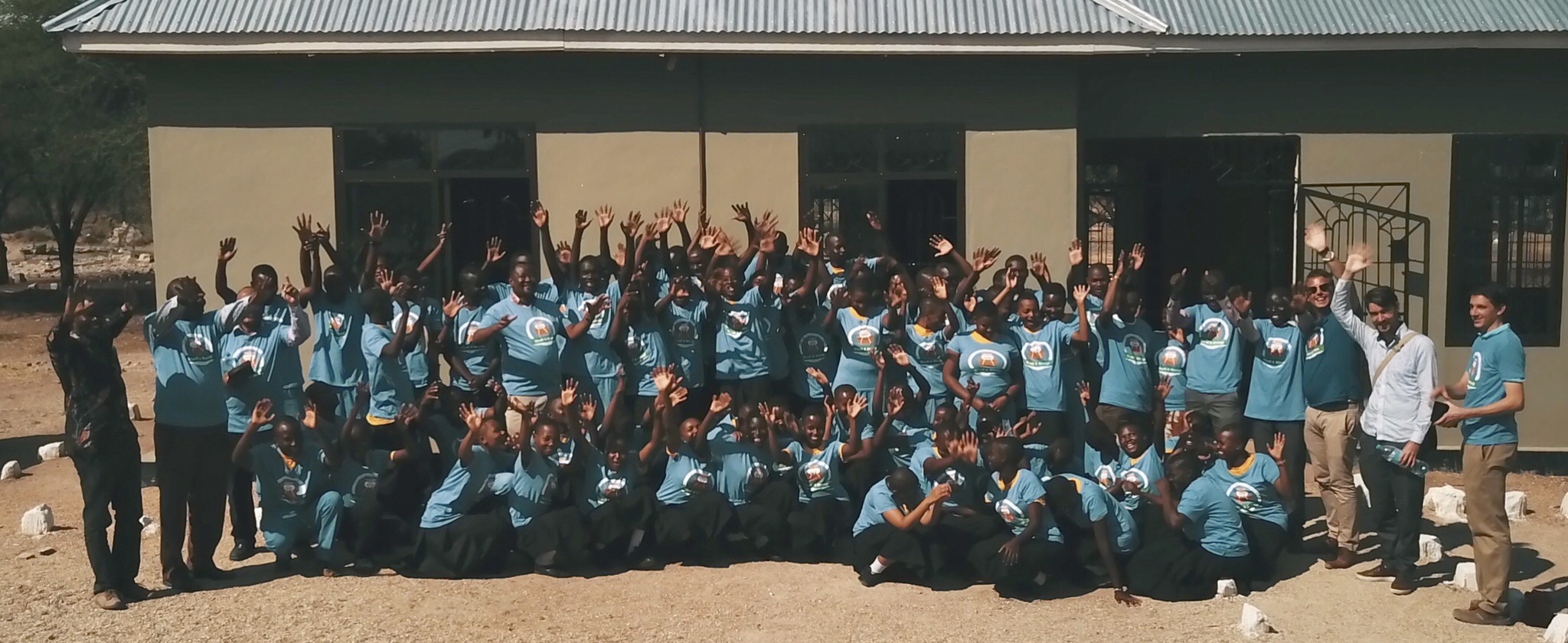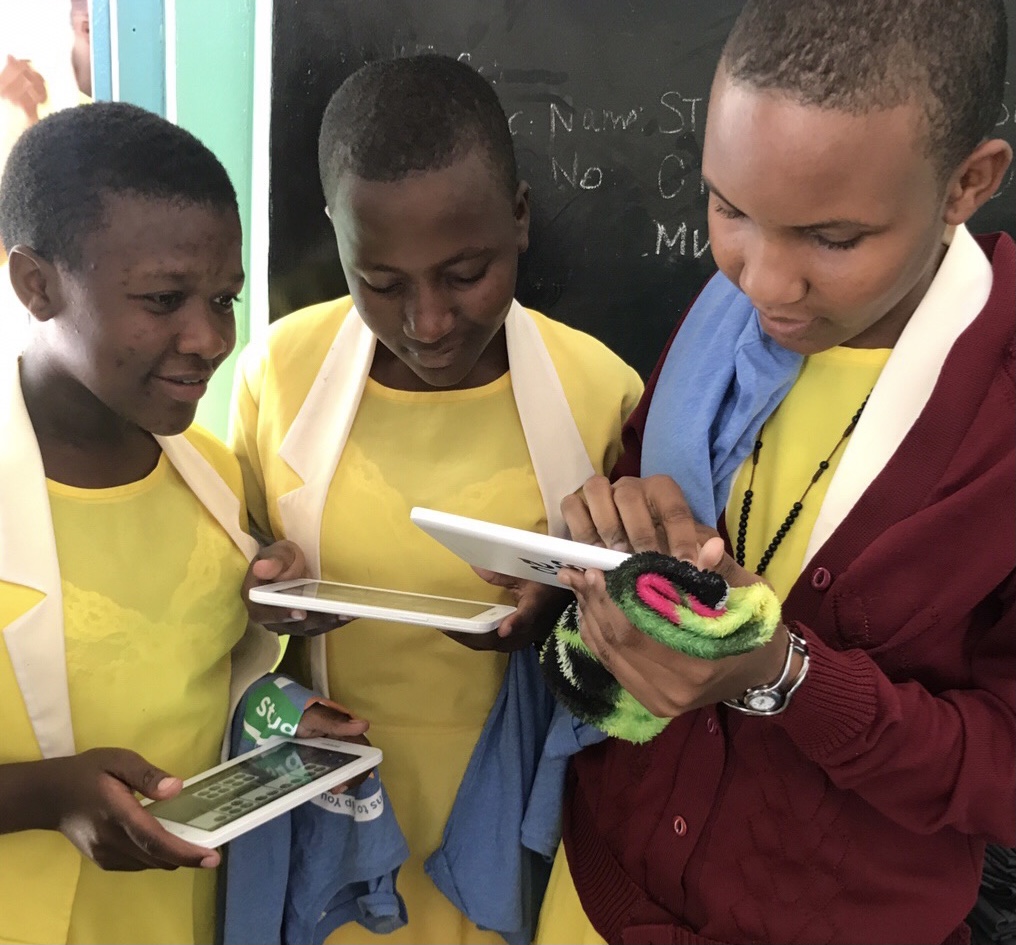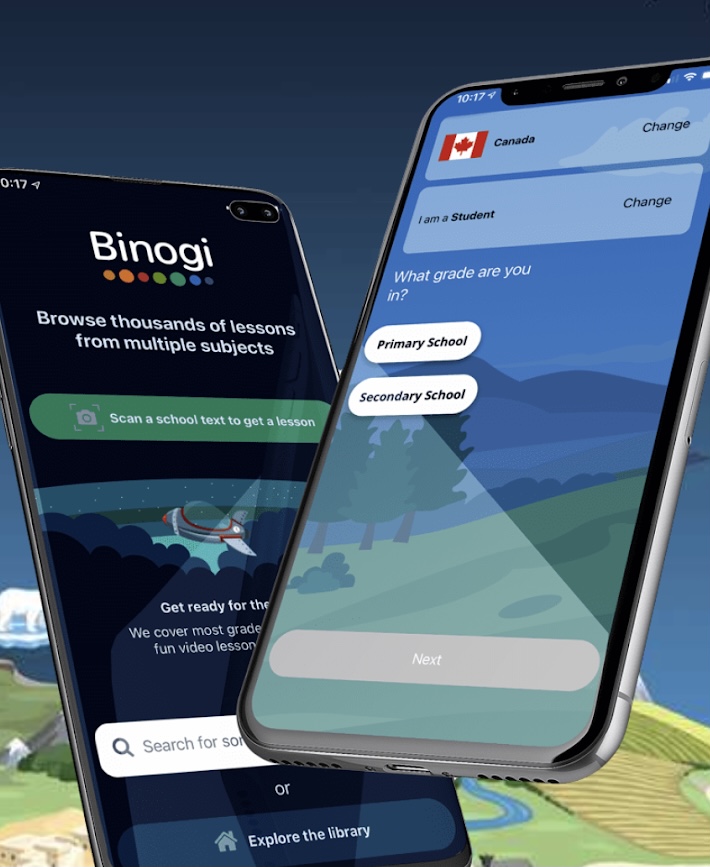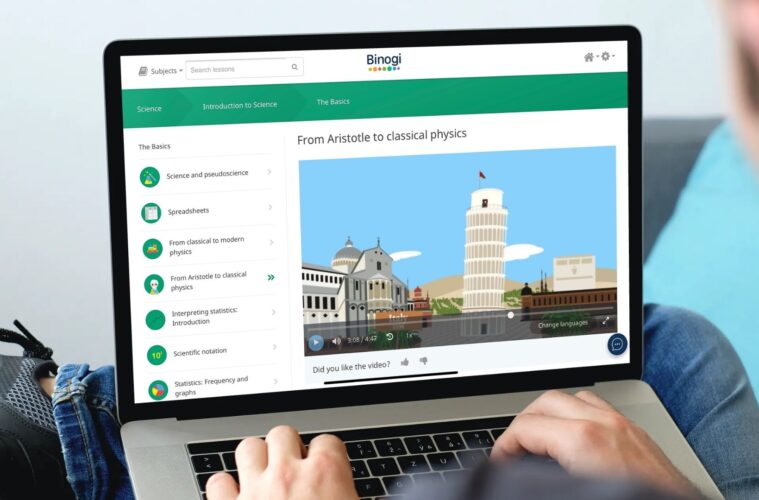The edutainment company, Binogi, has launched their proven homeschooling app in Canada to help students struggling through the pandemic.
Throughout the pandemic, children have been struggling to stay ahead of their learning in light of curriculum changes and delays. To help Canadian students and parents, Binogi has officially launched their successful interactive educational application and is changing the landscape by offering their proven program for free through Spring 2021.
As a leader in educational technology (ed-tech) and now educational entertainment (edutainment), Binogi allows students to study and learn from over 1,000 5-minute curriculum-based animated lessons, quizzes and teacher support in their language of choice. Understanding the multicultural needs of Canadian students and new citizens, the lessons are currently available in 10 languages including English, French, Swedish, Arabic, Tigrinya, Dari, Somali, Finnish, and German.
The three features that make Binogi stand out from all of the other educational apps are their focus on adapting to the changing needs of students, continuous testing with Canadian schools, and gaining endorsements from leading Canadian professors and educational Boards. To date, the Binogi platform is in use by over 1 million students in over 100 countries worldwide.
“We know this is a very challenging time for everyone, especially students that are falling behind and parents struggling to find ways to keep their homebound kids educated,” said Linus Gunnarson, CEO and co-founder of Binogi. “That is why we are stepping up to help Canadians by offering our inclusive educational app for free into Spring, so that every student can receive the support they need. We are proud to offer this new form of edutainment for all students.”
Binogi comes recommended and pilot tested by a number of Canadian educational professionals. Catherine Connors, a former teacher and curriculum leadership consultant with 32-years of experience with the Toronto Catholic District School Board (TCDSB), worked with Binogi in early 2018 on their pilot project with several classes. She was so impressed with the learning platform that Catherine now works with Binogi as an Implementation Manager to help them better connect with teachers and internal systems.
“One important feature is that Binogi levels the playing field for students, especially for those that may have greater learning needs,” said Catherine. “Binogi supports student learning and provides teachers with a resource to better meet the needs of their students.”
Also part of the pilot project was Dr. Emmanuelle Le Pichon, Assistant Professor at the University of Toronto and head of the Centre de Recherches en Éducation Franco-Ontarienne (CRÉFO). Dr. Le Pichon discovered that Binogi was an all-inclusive tool, especially adaptable for diverse languages.
In addition to the successful pilot, Binogi also partnered with Dr. Jim Cummins from the Ontario Institute for Studies in Education (OISE) of the University of Toronto. Dr. Cummins is a Professor Emeritus with over 40 years of academic experience and gave Binogi top marks for their platform.
“Simply put, I was blown away by the ambition, comprehensiveness, and the rationale to help make the curriculum more accessible for new Canadians,” stated Dr. Cummins. “Binogi increases access for all students, especially for those with learning gaps. It’s a game changer and all students should download this today.”
Following their successful 2018 pilot project, Binogi opened their first Canadian office in Halifax with the goal of driving innovation and to better help the students, teachers, and school districts/boards of Canada. With schools constantly adapting their curriculums, Binogi continues to work with the OISE of the University of Toronto in order to validate both the platform’s content and methodology. Furthermore, they support Sustainable Development Goals (SDGs) by implementing Education for Sustainable Development (ESD) related content.
We caught up with the Binogi team to discuss the platform, how they started, and the goals they are looking to tackle in the upcoming years. Check it out below:
Where did the idea for Binogi stem from?
In 2011, a team consisting of a Swedish games entrepreneur, a teacher, a videographer, and a student joined forces to find a better way to support students that were bored in school and wanted to learn more, faster and in a more enjoyable way.
Testing out the tool they created on students in live experiments after school, they found that children loved the mix of short, animated videos with an optimal length of 3-5 minutes, text and concept descriptions, and smart quizzes. The team also found that this tool they created—Binogi—helped the students improve their results in school.
After the trials, the team started to sell their product to the school industry, focusing on schools and teachers.
Unfortunately, the schools were not keen on using digital content to enhance learning as their students were already using them. The most tech savvy teachers understood the brilliance of the product, but the ED-tech (educational technology) entrepreneurs struggled as the market was still early.
By the beginning of 2014, a friend of the founders reached out to Binogi. He and his family had relocated to Dar El Salam in Tanzania as his wife was working for the aid funds. In exaltation, he explained that the Tanzanian school system was lacking 35,000 teachers. He proposed for Binogi to roll out in Tanzania as a perfect substitute for the lacking teachers and school structure. As explained by a friend: “Binogi has hundreds of videos that will help them understand. A tablet costs next to nothing and the schools have good facilities due to investments in infrastructure finances by the United Nations and European Union – how hard can it be?”
The Binogi team flew down to Tanzania to get to work. To say the least, the challenge was harder than imagined but the team was up to it. A few roadblocks along the way; the Tanzanian school system is based on a British curriculum, however, primary school is all in their mother tongue of Swahili whereas secondary school is in English. As a result, the dropout rate between primary and secondary school is high.

With this in mind, the Binogi team was convinced to make a difference with their digital content and made adjustments such as making all material bilingual in English and Swahili.
The discovery of the results were astonishing: the kids learned the subject matter better, their English improved significantly faster, and the greatest discovery of all was that their mother tongue Swahili improved on an academic level.
During this time in late 2014, Europe saw a greater influx of newcomers from Syria, Somalia, Eritrea and Afghanistan. Northern Europe faced the challenge of helping lone coming children and the schools—who were appointed to take care of those kids—were lacking the knowledge and experience to do so. The proper tools needed to welcome these children who had no knowledge of the local language used in the school system were in dire need.
With the successful trial in Africa, Binogi translated their already existing lessons into Arabic, Somali, Tigrinya, and Dari with the same tremendous results they achieved in Tanzania. A tool that was originally made for talented, bored students was easily adjusted to support students that were facing other struggles in school. A newcomer child was now able to continue their studies on the right level but in a Swedish class with Swedish teachers and classmates of the same age. The only exception being that they can follow along and learn in their mother tongue.

Instead of losing two years of schooling focusing on learning a new language, these students were offered an opportunity to maintain their pace and join children in their age group at their new school. Since that fateful series of opportunities, the Binogi tool took off and as of today has served more than 1.1 million users with their inclusive app.
The technique Binogi discovered was not entirely unknown. Professor Jim Cummins from The University of Toronto presented this within his 1979 dissertation. The team flew to Toronto to meet with Jim in 2018 and started a collaboration around language acquisition and learning material digitization.
Having gained school and educational expert support within Canada, Binogi opened a Canadian production office in Halifax, Nova Scotia and has engaged in numerous Canadian research projects involving The University of New Brunswick and The University of Ottawa.
How does Binogi combat today’s educational struggles within the pandemic?
As the global pandemic has affected in-class learning and curriculum schedules, we have seen a substantial growth in usage from teachers and students from over 100 countries using the platform in more than 10 languages. This is also why we were eager to soft launch our inclusive Canadian specific app for students now.
What’s next for Binogi?
Our goal is for Binogi to be inclusive for all children, all over the world, no matter if they are rich or poor.
Beyond the students, we want to work with and support teachers in terms of better aligning with the curriculum requirements.
The future of digital education will rely on more publishers going digital and more schools opening up to a digital first approach. Binogi is striving to become one of the top, global players that will achieve this—and we are well on our way.
We want to be for edutainment what Spotify is for music!

To take advantage of the platform, download the Binogi app from the Google and Apple App stores or visit try.binogi.ca.
About Binogi
Founded in 2011 by four entrepreneurs with backgrounds within education and social gaming, their vision was to introduce a true ‘edutainment’ app by creating exciting educational content that offers the same enthusiasm and thrills as the games kids play. During the development of the platform, the team discovered that they received an increase in learning results from children with language struggles, learning disabilities, and kids who were bored in school.Today, Binogi has grown to become one of the leading ed-tech companies that offers a 10-language digital educational platform in use byover 1 million students across 100 countries worldwide. Following the success of their 2018 Canadian pilot project, the Binogi platform is endorsed by leading University of Toronto professors and active at several schools across Canada.With an office out of Halifax, Binogi is focused on driving innovation to better help students, teachers, and school districts/boards throughout Canada. To find out more about the success of Binogi, download the Binogi app or visit try.binogi.ca.


